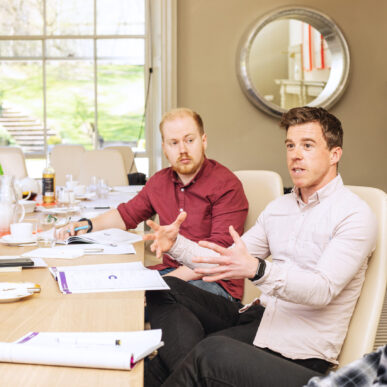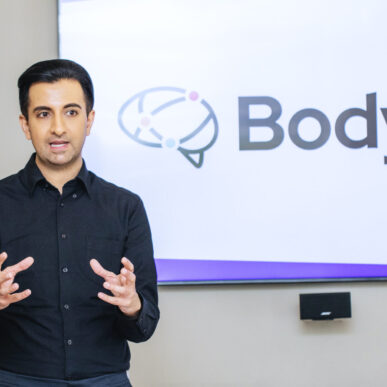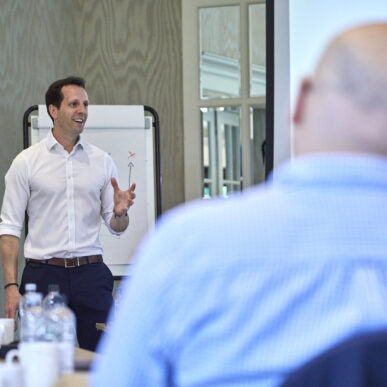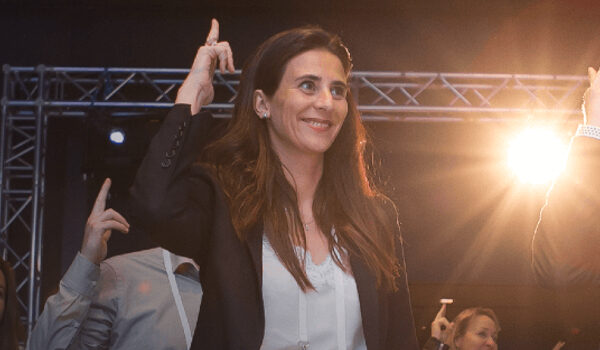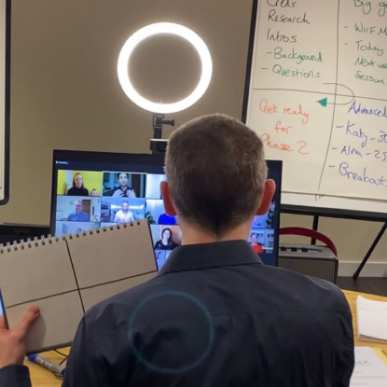Communication is how we lead, inspire and make things happen. But when barriers get in the way, even the best ideas can fall flat.
At Body Talk, we help people overcome the real barriers that hold their communication back. This guide explores 15 of the most common barriers to communication we see every day – what causes them, how they show up in the room, and what you can do to break through them.
You’ll find practical steps, useful insights and tools you can apply straight away.
What are barriers to communication?
Barriers to communication are anything that gets in the way of people understanding each other. They interrupt the connection between what we want to express and what others actually hear or feel. Sometimes they’re obvious, like language or distance. Other times, they’re hidden in tone, timing, or emotion.
But once you know what these barriers are, you can start to remove them. And when you do, everything changes.
The top 15 barriers to communication
These are the 15 barriers standing between your team and powerful communication.
1. Overuse of jargon
Jargon shows up everywhere – whether it’s through buzzwords, acronyms or technical terms. We use it to name things, share ideas quickly, and show we’re in the know. When it’s used with care, it can help people feel part of something.
But according to Professor Adam Galinsky, the Paul Calello Professor of Leadership & Strategy and Ethics at Columbia Business School, leaders should use it with caution.
In his research on the effects of jargon in communication, Galinsky found that people often use it to feel more secure or to signal expertise.
“We use jargon when we’re feeling insecure, to try to help us feel like we have a higher status,” he explains.
“When you’re younger, and you’re using jargon correctly, it lets people know you understand. But as a leader or a manager, it makes you seem like less of a visionary.”
It’s all about judgement. If your audience is likely to pause, question, or feel excluded by your language, it’s time to rethink it. When in doubt, simplify. The clearest message is the one that connects.
2. Physical communication barriers
Environmental factors play a big role in how well we communicate. Background noise can make it harder to stay focused and fully engaged, whilst closed office doors can get in the way of face-to-face communication.
Remote working has introduced new physical barriers too, such as difficulty in reading body language. If your team spends time in virtual meetings, our blog on digital body language offers helpful tips to strengthen how you come across.
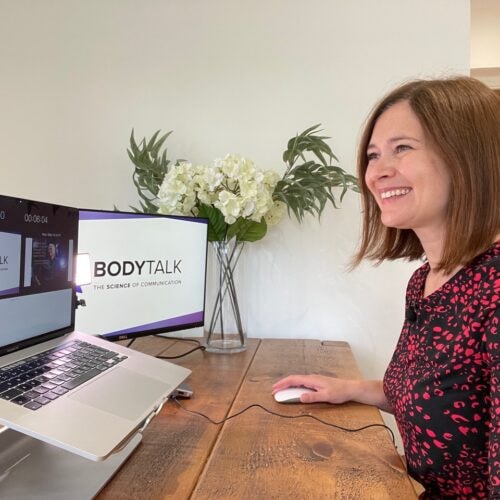
3. Emotional barriers
When emotions take over, communication can suffer. A past experience that went badly, personality conflicts, or even just a moment of frustration can all make it harder to think clearly and express ourselves well.
If you’re feeling angry or overwhelmed, your brain reacts. Psychiatrist Dr Alex Dimitriu, MD explains that when you’re feeling angry, the prefrontal cortex – the part of the brain responsible for clear thinking and self-control – can become suppressed.
Naturally, this makes it harder to communicate effectively. But emotion isn’t the enemy. Passion, conviction, and belief in what you’re saying can move people, when you know how to channel it. That’s why we encourage learning practical techniques to help you stay present, centred and in control, even when emotions run high.
4. Psychological barriers
Psychological barriers, like a lack of confidence, are more common than you think. So many people hold back, not because they don’t have something valuable to say, but because they don’t feel confident saying it. They worry about being judged, misunderstood, or not sounding “good enough”.
But confidence isn’t something reserved for a few. It’s a skill, and like any skill, it can be learned.
We’ve seen it time and time again. When people are shown how to manage nerves, structure their thoughts and use their body language with intention, something shifts. They stand taller. They speak with purpose. They connect.
The potential is already there. Confidence simply brings it to the surface.
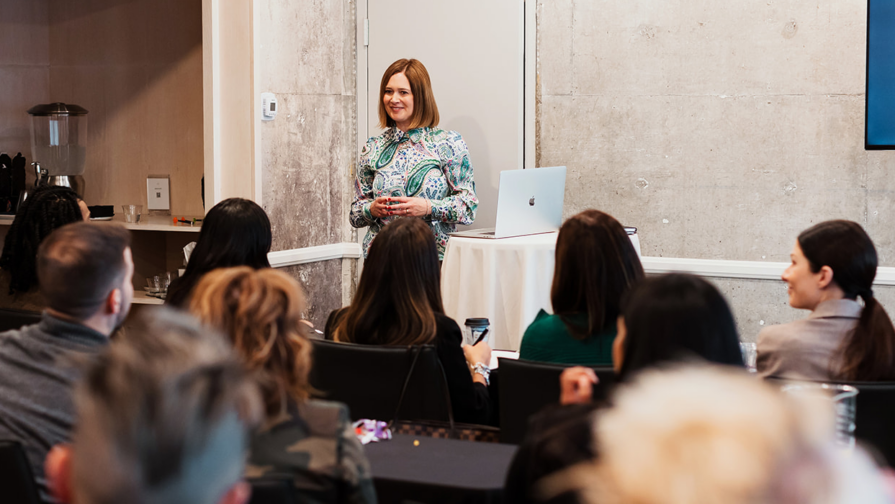
5. Cultural differences
Every person sees the world a little differently. We all come to a conversation with our own background – our cultural values, our generation, even our expectations. And if we’re not aware of that, things can get lost in translation or misinterpreted. For example, a simple gesture might mean something entirely different in another culture.
The solution is curiosity and respect. Great communicators take the time to understand who they’re speaking to. When you tune in to cultural norms, values and experiences, you build trust and make sure your message lands the way you intended.
6. Language differences
It’s hard to connect when you’re not quite sure what someone means. Different first languages, unfamiliar words or complex vocabulary can all make communication feel like hard work. And when people are working hard just to keep up, they stop listening.
This is where clarity really matters. Use plain, direct language. Avoid idioms or culture-specific phrases unless you know everyone understands them. If someone needs a translator because of a language barrier, support that and never assume your message has landed. Check in a way that feels respectful. A simple, “Does that make sense?” can go a long way.
7. Lack of time
When everyone’s busy, communication can quickly become rushed. You might be racing through a message to keep things moving. The person you’re speaking to might be distracted, already thinking about the next task. In the pressure to save time, we often lose clarity.
The solution isn’t more time; it’s better use of the time you have. Start with the outcome you want, get to the point with confidence, and be ready to pause if needed. Even a few seconds of clarity can make your message far more effective.
8. Information overload
Sometimes, we try to say too much at once. It’s easy to overload your audience or colleagues with facts, background, context and detail, especially when you care deeply about the topic. But when everything feels important, nothing stands out.
Strong communicators know how to prioritise. They make the key message clear upfront, repeat it in the right moments, and trim away anything that clouds the point. Whether you’re leading a meeting or delivering a big presentation, less really can be more – if what you say is focused, relevant and easy to remember.
9. Listening skills
When leaders and teams make space for different voices, ideas get stronger, not weaker. Listening isn’t passive; it’s a skill. And like any skill, it gets better with practice.
Encouraging open communication means creating an environment where people feel safe sharing their views and know those views will be respected. Great communicators don’t just respond; they reflect. They ask questions, stay curious, and make others feel valued.
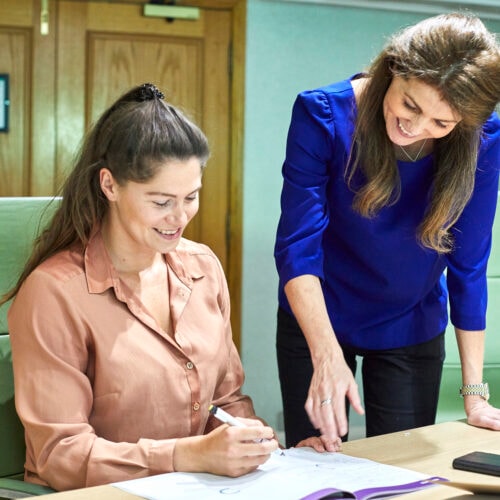
10. Inconsistency
When communication is inconsistent, it creates confusion. When people hear a clear message, they know where they stand. It’s not about repeating yourself word for word. It’s about aligning your message across the business so everyone stays informed, focused and on the same page.
11. Lack of trust
When trust is low, people stop saying what they really think. They hold back, keep ideas to themselves, or play it safe in conversations. The solution? Give them a reason to trust.
That starts with your tone of voice: clear, composed and human. Avoid slipping into corporate speak or over-polished language. Instead, relate to your audience. Ground your message in their reality. Share a short story, a specific example, or even a challenge you’ve faced. When people see your message has relevance and a human touch, they’re far more likely to trust it.
12. Lack of context
It’s easy to forget that not everyone has the same background knowledge as you. You might dive straight into the detail of a project, skip the ‘why’, or reference decisions made in a different room. Without meaning to, you leave people behind.
The solution is simple: know who you’re talking to. Think about what they already know, what they need to know, and what will help them feel included. Set the scene. Share the ‘why’ before the ‘what’.
13. Misunderstandings
Not every message lands first time. Sometimes, people nod along but don’t really grasp what’s being said. Maybe the concept is complex. Maybe it wasn’t explained in the right way for that audience. Either way, a lack of understanding slows things down and causes mistakes.
Clarity is a choice. It takes awareness, empathy and the willingness to pause, explain and check in. Great communicators don’t just speak, they make sure people walk away feeling confident in what they’ve heard.
14. Body language
Body language plays a huge role in how our message is received. Facial expressions, posture, gestures, and even eye contact all send signals, whether we realise it or not.
Our founder, Richard Newman, experienced just how impactful body language can be during his time teaching English to Tibetan monks. As they didn’t share a spoken language, he used nonverbal communication—body language alone—to connect with them. It worked because when used well, body language becomes a bridge between people.
Awareness is the first step. Pay attention to how you physically show up. Are you creating openness with your body, or putting up barriers? Strong communicators align their body language with their words to reinforce trust, connection and clarity.

15. Attitudinal barriers
If someone is resistant to change, disengaged from the topic, or cynical about the source, even the best communication can fall flat. You can’t force someone to care, but you can influence how they feel.
Start with empathy. Acknowledge what might be fuelling the resistance, whether it’s fear of change, lack of information, or past experience. Then lead with clarity and honesty. Be transparent about what’s happening and why it matters.
Over time, attitude shifts when people feel included, informed and genuinely listened to. If you’re struggling with this, we provide conflict resolution training at Body Talk tailored to your organisation.
Overcoming communication barriers
Let’s recap. Here’s how you can start breaking down those barriers and build stronger, more confident communication.
Build awareness of your workforce
Different people communicate in different ways, and that’s a strength, not a weakness. Take time to understand the dynamics within your team. Generational, cultural and linguistic differences all shape how people speak, listen and engage. So do cognitive impairments, disabilities, and the use of tools like hearing aids.
The more aware you are of these perspectives, the better you can adapt your message to meet people where they are.
Make messages clear, consistent and concise
Be specific about what you mean, read the room when it comes to using jargon, and stick to one message at a time. Whether you’re presenting a company update, giving feedback, or speaking in a meeting, simplicity will take your message further.
Train, coach and lead by example
People take their lead from the top. If you want better communication in your team or organisation, show them what good looks like.
At Body Talk, we’ve worked with thousands of people across industries and around the world with leadership communication skills. And time after time, we’ve seen what happens when someone discovers how powerful they can be, just by learning how to communicate well.
Communication skills training that transforms how you show up
You don’t have to keep second-guessing what to say or how to say it. Whether you’re handling conflict, delivering feedback, navigating objections or inspiring a team, Body Talk gives you the tools to rise to the moment.
Choose the course that fits your goals and your style:
- In-person workshops – Practical, energising experiences to build skill and confidence.
- Open courses – Join learners from other organisations and build your skills together.
- Guided virtual learning – Attend three powerful two-hour sessions with your Body talk coach from anywhere.
- E-learning – On-demand learning designed to fit around your day.
Whatever barrier you’re facing, there’s a solution.
Explore our communication skills training courses today and take the first step towards confident, transformational communication within your team.
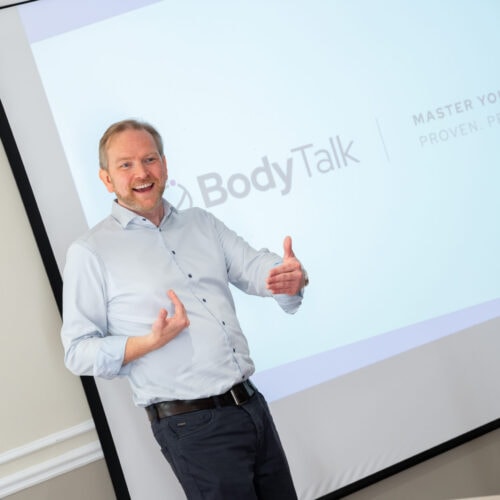
Frequently asked questions
Got a question on the barriers to communication? We’ve answered some of the most common ones below.
Don’t see your question? Get in touch with us!
What are the most common communication barriers in the workplace?
The most common barriers to effective communication in the workplace are:
- Physical barriers – such as poor office layouts, background noise, or remote working setups that reduce connection.
- Emotional and psychological barriers – stress, anxiety, and fear of judgement can make people hold back or misread intent.
- Cultural barriers – different cultures bring different cultural beliefs, values, and communication styles that can easily cause misunderstanding.
- Technical jargon – using complex or specialist language can create barriers when your audience isn’t familiar with the terminology.
Every one of these creates barriers. But every one of them can be overcome. With the right tools, awareness and intention, you can communicate clearly across generations, cultures and teams.
How can organisations measure communication effectiveness?
To improve any communication process, you first need to understand how it’s landing. That starts with asking the right questions, and really listening to the answers.
- Use feedback surveys to hear directly from your people
- Schedule regular team check-ins to open up honest conversations
- Track whether messages are understood, retained, and acted on
What is a barrier to communication in health and social care?
In health and social care, communication carries even more weight, and a key barrier to communication is how messages are perceived. Under stress or in complex situations, even the clearest words can be misunderstood. Add in technical terms, emotional strain, or cultural differences, and the risk of communication barriers grows.
This is where skilled, compassionate communication becomes transformative. Remember to:
- Keep it simple. Avoid complex terms and speak with clarity.
- Tune in. Use eye contact, body language and tone to build trust.
- Check understanding. Invite questions or ask people to reflect back key points.







